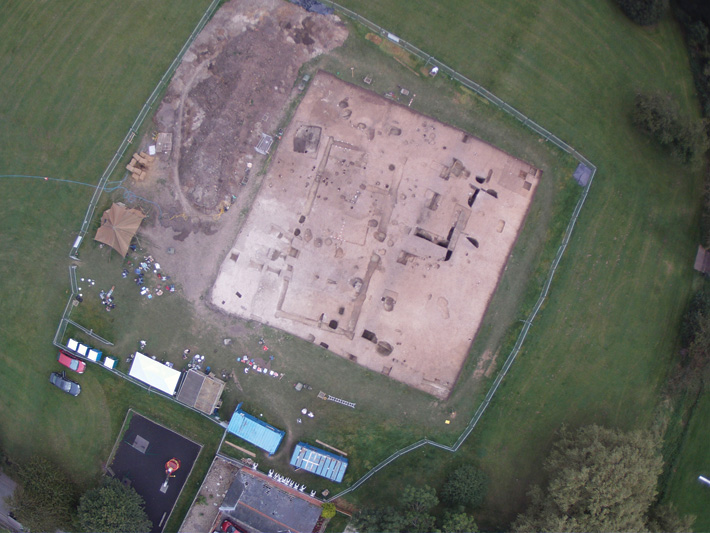The Kings of Kent
The surprising discovery of an Anglo-Saxon feasting hall in the village of Lyminge is offering a new view of the lives of these pagan kings

Fifth-century Britain was a tumultuous place, wracked by violence, upheaval, and uncertainty. The Roman Empire was crumbling throughout western Europe as waves of barbarian invaders overran its borders. By A.D. 410, groups of Angles, Saxons, and Jutes began crossing the North Sea from Germany and southern Scandinavia to claim land in Britain that had been abandoned by the Roman army. These tribes succeeded Rome as the dominant power in central and southern Britain, marking the beginning of what we now call the Anglo-Saxon Age, which would last for more than 600 years.
While the story of this period is known to us in broad strokes, in archaeological terms, there remains much to uncover. The early Anglo-Saxon period is a time whose events are often shrouded in fantasy. This fantastical view can be traced to later, Christian writers who described the pagan world of the fifth and sixth centuries as being inhabited by wizards, warriors, demons, and dragons. Legendary tales, passed down, were often the subject of later Old English works of poetry. Perhaps the most famous of all is the epic work Beowulf, whose eponymous hero battles monsters and fire-breathing dragons. But some of the details of early Anglo-Saxon life that have been gleaned piecemeal from texts are now being confirmed by archaeology. Such is the case with the recent surprising discovery of a Saxon royal feasting hall.
http://www.archaeology.org/issues/89-1305/features/735-anglo-saxon-pagan-kings-lyminge-kent
